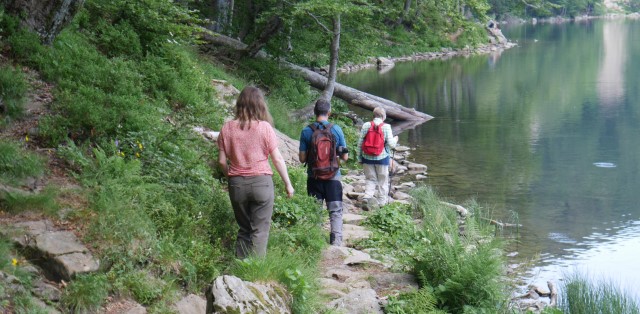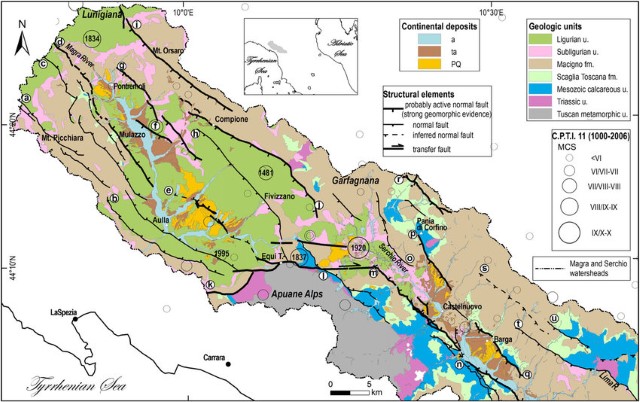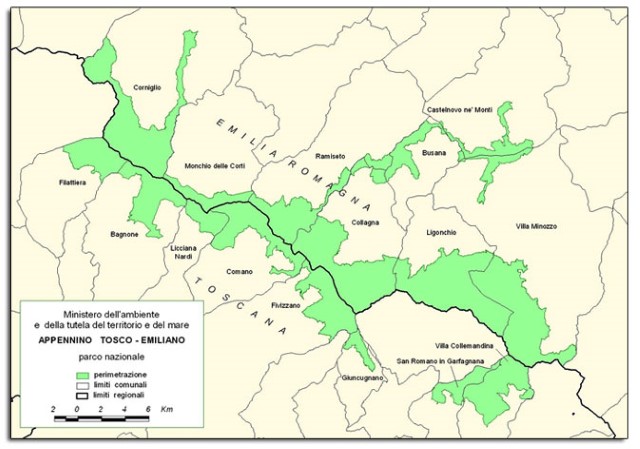
Walking & hiking opportunites in the Lunigiana are many and varied. Many of the mid-level routes pass through woodland though there are plenty of alpine meadows to traverse. At high level (ie above, say 1500m) the landscape is characterised by heathland interspersed with rocky outcrops. The geology is very complicated and there are many faults, making the area one of the most seismically active in the Northern Apennines (see here for greater detail).

Generally speaking, chestnut woods occupy the lower woodland (300-750m ASL) with oaks then beech occupying the higher ground. There are many forestry tracks and CAI signed paths, though most of the latter are on routes leading from the valleys to the mountain passes. In other words, once one leaves the valley floor the walking becomes progressively more demanding and there are few circular routes of constant, or near constant, elevation. Although one is rarely too far from civilisation it is possible to walk all day without seeing another soul.
When the weather is fine, the area has a benign feel to it. In poor conditions, however, it’s easy to get lost, wet and cold, and find oneself in danger. For this reason it’s foolish not to leave details of where one is going and when one is expected back before embarking on hikes of any significant length at any significant altitude.
National, Regional & Provincial Parks
There are three parks which dominate the Lunigiana:
- Parco Nazionale dell’Appennino Tosco-Emiliano established 2001
- Parco Naturale Regionale delle Alpi Apuane established 1985 and classed by UNESCO as a World Geopark in 2012
- Parco Regionale delle Valli del Cedra e del Parma (better known as Parco dei Cento Laghi) established 2007
Confusingly, the first and third of these parks overlap geographically and each has its own set of rules and regulations. To give you a flavour of the rules in force, I present below my translation of the relevant web page for the Tosco-Emiliano National Park:
The legislation currently in force within the Park includes the safeguarding rules appended to the founding decree (Discipline for the Protection of the National Park of the Tuscan-Emilian Apennines) as well as the general and specific legislation of other bodies.
As regards the collection of mushrooms and forest-floor products, the reference legislation derives from regulations introduced by the regions, provinces and mountain communities, including those regarding fishing which is however prohibited in Zone 1 of the Park. Grazing and other uses of the woods are regulated by the “General Regulations and Forestry Police” or by specific regional laws. Tree felling is prohibited in Zone 1 and is only allowed in Zone 2 when authorized in advance by the Park authority. Such work is permitted in Zone 3 provided that it is undertaken in compliance with the relevant regulations in force.
The introduction of weapons to Park territory (and firing into or through it) is forbidden unless previously authorized by the Park authority. Camping is prohibited outside the areas specifically equipped for this purpose, the only exception being that within Zones 2 and 3 bivouacs or tents may be erected at sunset and then only on the basis that they be taken down and removed the following dawn.
Any motorized vehicles used in the Park must stick to the state, provincial, municipal and local service roads. That said, motorized vehicle access is absolutely forbidden in Zone 1 except when specifically authorized by the Park Authority. On forest roads, access is also regulated by the “General Regulations and Forestry Police” which supplement the general and specific reference legislation. The interventions within the Sites of Community Importance and Special Protection Areas are regulated by the European “Habitat” and “Birds” directives, by national regulations, by general and specific conservation measures or by the management plans of the individual sites as approved.
